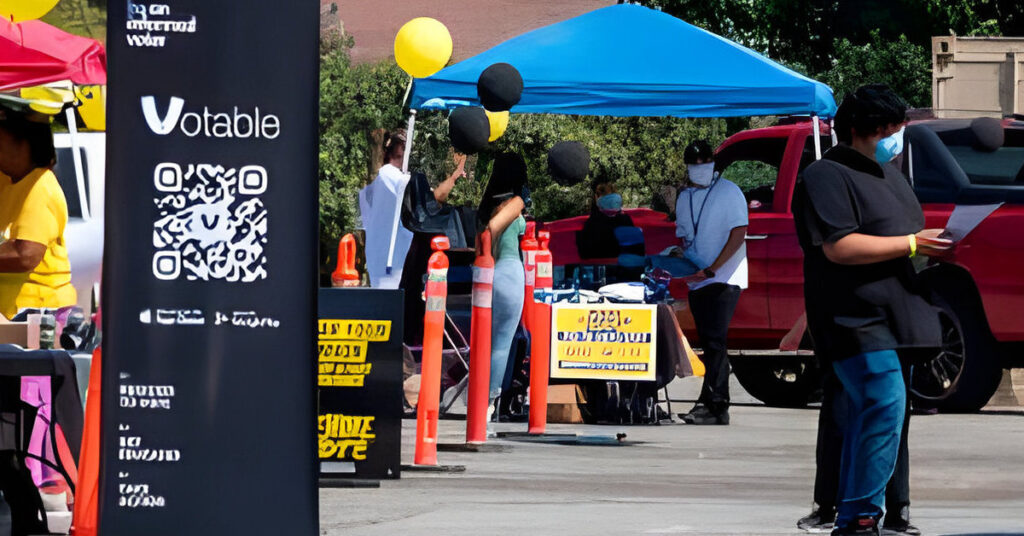Gen Z 50/50 Gender Divide: Political Fix Needed
Introduction
The divide between genders within Generation Z has emerged as a significant political issue in recent years. This demographic, consisting of individuals born roughly between 1997 and 2012, is known for its progressive values, technological savviness, and diverse perspectives. However, despite these qualities, a notable gender divide has manifested, influencing political opinions, behaviors, and societal impacts. To address this issue, it is essential to delve into its origins, manifestations, and potential solutions, with an emphasis on the urgent need for political interventions.
Historically, the gender divide in political opinions is not a novel phenomenon. Men and women have exhibited differing political inclinations, with women often leaning towards more progressive policies and men towards conservative ones. This trend has evolved over time, influenced by cultural shifts, economic changes, and social movements. For Gen Z, growing up in a digital age where social media and online platforms play a pivotal role in shaping opinions and disseminating information has been a defining characteristic. The echo chambers created by these platforms often reinforce existing beliefs and can exacerbate gender divides. Men and women may follow different influencers, engage with distinct content, and participate in varied online communities, leading to divergent political views.
The gender divide is evident in voting patterns. Studies have shown that Gen Z women are more likely to support progressive candidates and policies than their male counterparts. For instance, issues such as climate change, gender equality, and LGBTQ+ rights garner more support from young women. In contrast, young men may prioritize economic policies, national security, and individual freedoms.
This divide extends beyond voting into activism and advocacy, with Gen Z women often at the forefront of movements related to social justice, such as the #MeToo movement and Black Lives Matter. Men, while also participating in activism, may focus more on issues like free speech and gun rights. In educational and workplace environments, the gender divide is also apparent. Women in Gen Z are more likely to pursue higher education and advocate for policies that promote diversity and inclusion in the workplace. Men, on the other hand, may emphasize the importance of meritocracy and individual achievement.
This divergence in priorities and values is shaped by several factors, including socialization, media representation, and economic influences. From a young age, boys and girls are socialized differently, which can lead to distinct worldviews and political opinions. Traditional gender roles and expectations continue to influence the interests and priorities of young men and women. Media representation plays a critical role in shaping the political opinions of Gen Z. The portrayal of genders in media, including news outlets, movies, and television shows, often reinforces stereotypes and can contribute to the gender divide in political views.
Additionally, economic factors play a role in this divide. Young women may prioritize policies that address wage gaps, paid family leave, and affordable healthcare, while young men may focus on economic policies that promote entrepreneurship and job growth. The gender divide within Gen Z has significant political implications. Policymaking must address the concerns of both genders to create inclusive and effective policies. The voting patterns of Gen Z will have a profound impact on future elections, and understanding this gender divide is crucial for political parties and candidates aiming to secure their support. Tailored campaign strategies that resonate with both young men and women are essential for electoral success.
One of the most effective ways to address the gender divide is through education and awareness. Schools and universities should incorporate curricula that promote gender equality and critical thinking. Encouraging open discussions about political issues can help bridge the gap between genders. Improving media literacy among Gen Z is also vital. Teaching young people how to critically analyze media content and recognize biases can mitigate the impact of echo chambers and foster a more nuanced understanding of political issues.
Policymakers must prioritize creating inclusive policies that address the concerns of both genders. This includes promoting gender equality in the workplace, ensuring equal access to education, and addressing issues such as reproductive rights and economic disparities. Encouraging civic engagement among Gen Z can also help bridge the gender divide. Initiatives that promote participation in community service, political campaigns, and grassroots movements can foster a sense of shared purpose and collaboration between young men and women.
Increasing the representation of diverse role models in politics and media is crucial. Seeing individuals from various backgrounds and genders in leadership positions can inspire Gen Z and demonstrate that diverse perspectives are valued and respected. The gender divide within Gen Z is a complex and multifaceted issue that requires urgent political attention. By understanding the causes and manifestations of this divide and implementing targeted solutions, we can bridge the gap and create a more inclusive and equitable society. Policymakers, educators, and community leaders all have a role to play in addressing this issue and ensuring that the voices of all young people are heard and valued. Through concerted efforts, we can fix Gen Z’s 50/50 gender divide and build a stronger, more united future.
To further understand the complexities of this issue, it is essential to explore key statistics that highlight the gender divide within Gen Z. Data from recent elections show a significant gender split in voting preferences among Gen Z. Additionally, statistics on the involvement of young men and women in various social movements reveal differences in activism participation. Comparative data on the pursuit of higher education by gender within Gen Z also shed light on educational attainment disparities. Surveys highlighting the economic issues prioritized by young men and women provide insights into the economic factors influencing the gender divide.
Case studies offer valuable perspectives on the impact of social media influencers on the political views of Gen Z women, the role of online communities in shaping the political opinions of Gen Z men, and successful initiatives that have bridged the gender divide in educational settings. Interviews with Gen Z activists provide firsthand insights into their experiences and perspectives on the gender divide, while quotes from experts offer informed opinions on the causes and implications of this issue.
Resources for addressing the gender divide include educational programs that promote gender equality and political awareness, media literacy tools to improve critical analysis of media content, and civic engagement opportunities through organizations and initiatives that encourage participation in community service, political campaigns, and grassroots movements. By leveraging these resources and implementing targeted solutions, we can bridge the gender divide within Gen Z and foster a more inclusive and equitable society.
In conclusion, the gender divide within Gen Z is a pressing political issue that demands immediate attention. Understanding the origins, manifestations, and potential solutions to this divide is crucial for creating inclusive and effective policies. By prioritizing education, improving media literacy, promoting inclusive policies, encouraging civic engagement, and increasing diverse representation in leadership positions, we can address this issue and ensure that the voices of all young people are heard and valued. Through concerted efforts, we can fix Gen Z’s 50/50 gender divide and build a stronger, more united future.
Read More:“Gen Z: 50% Torn on Biden, Fear Trump’s Return”
The Historical Context
The gender divide in political opinions is not a new phenomenon. For decades, men and women have exhibited different political inclinations, with women often gravitating towards more progressive policies and men leaning towards conservative ones. This trend has evolved over time, influenced by a variety of factors including cultural shifts, economic changes, and major social movements. Each generation has experienced these influences differently, and Gen Z is no exception.
The cultural shifts of the past few decades have significantly impacted the way gender roles are perceived. The feminist movements of the 20th and 21st centuries have fought for and achieved considerable progress in gender equality, influencing the political landscape. Economic changes, such as the increasing participation of women in the workforce and the evolving nature of work itself, have also played a role. These factors, combined with major social movements advocating for LGBTQ+ rights, racial equality, and environmental justice, have shaped the political views of Gen Z.
Growing up in a digital age where social media and online platforms play a pivotal role in shaping opinions and disseminating information has been a defining characteristic of Gen Z. The echo chambers created by these platforms often reinforce existing beliefs and can exacerbate gender divides. Men and women within this generation may follow different influencers, engage with distinct content, and participate in varied online communities, leading to divergent political views. These digital environments can create feedback loops that intensify pre-existing gender-specific perspectives, making it challenging to bridge the divide.
The Manifestations of the Gender Divide
The gender divide in Gen Z is most evident in voting patterns. Studies have consistently shown that Gen Z women are more likely to support progressive candidates and policies compared to their male counterparts. Issues such as climate change, gender equality, and LGBTQ+ rights tend to garner more support from young women. These women often view these issues as critical to achieving a fair and just society. In contrast, young men may prioritize economic policies, national security, and individual freedoms. This divergence in priorities reflects broader trends seen in the general population but is particularly pronounced among Gen Z.
Beyond voting, the gender divide extends into activism and advocacy. Gen Z is a highly engaged generation when it comes to activism, with women often leading the charge in movements related to social justice. The #MeToo movement, which focuses on combating sexual harassment and assault, and Black Lives Matter, which addresses racial injustice, have seen significant participation from young women. Men, while also participating in activism, may focus more on issues like free speech and gun rights. This division in activist causes underscores the broader political split within the generation.
Educational and workplace environments also reflect this gender divide. Women in Gen Z are more likely to pursue higher education and advocate for policies that promote diversity and inclusion in the workplace. They see these measures as essential to achieving equality and creating opportunities for all. Men, on the other hand, may emphasize the importance of meritocracy and individual achievement, often viewing policies aimed at diversity as potentially undermining these principles. This divergence in priorities and values is shaped by several factors, including socialization, media representation, and economic influences.
Socialization and Cultural Norms
From a young age, boys and girls are socialized differently, which can lead to distinct worldviews and political opinions. Traditional gender roles and expectations continue to influence the interests and priorities of young men and women. Boys are often encouraged to be assertive, independent, and competitive, traits that align with conservative values emphasizing individual responsibility and self-reliance. Girls, meanwhile, are often socialized to be nurturing, empathetic, and cooperative, traits that align with progressive values emphasizing community, equality, and social support.
This differential socialization can result in men and women developing distinct priorities and political viewpoints. For example, women might be more attuned to issues related to social justice, equality, and community welfare, while men might prioritize economic growth, national security, and personal freedoms. This divergence is further compounded by the types of social networks and communities that men and women build, both online and offline, which can reinforce their respective worldviews.
Media Representation
Media representation plays a critical role in shaping the political opinions of Gen Z. The portrayal of genders in media, including news outlets, movies, and television shows, often reinforces stereotypes and can contribute to the gender divide in political views. Women are frequently depicted in roles that emphasize empathy, cooperation, and nurturing, while men are often shown in roles that highlight independence, assertiveness, and competitiveness.
These portrayals can influence how young men and women perceive themselves and their roles in society. Women may be more likely to see themselves as advocates for social change and equality, while men may be more inclined to view themselves as defenders of tradition and personal liberty. These media influences can shape the political priorities and affiliations of young people, reinforcing the gender divide.
Economic Factors
Economic factors also play a significant role in the gender divide. Young women may prioritize policies that address wage gaps, paid family leave, and affordable healthcare, issues that directly impact their economic security and well-being. They might support progressive economic policies that aim to reduce inequality and provide a social safety net.
On the other hand, young men may focus on economic policies that promote entrepreneurship, job growth, and personal financial success. They might favor conservative economic policies that emphasize free markets, deregulation, and individual responsibility. These differing economic priorities can lead to divergent political views and voting behaviors.
Political Implications of the Gender Divide
The gender divide within Gen Z has significant political implications. As this generation becomes more politically active and influential, their divergent views will shape the political landscape. Policymakers must address the concerns of both genders to create inclusive and effective policies. The voting patterns of Gen Z will have a profound impact on future elections, and understanding this gender divide is crucial for political parties and candidates aiming to secure their support. Tailored campaign strategies that resonate with both young men and women are essential for electoral success.
Education and Awareness
One of the most effective ways to address the gender divide is through education and awareness. Schools and universities should incorporate curricula that promote gender equality and critical thinking. Encouraging open discussions about political issues can help bridge the gap between genders. Improving media literacy among Gen Z is also vital. Teaching young people how to critically analyze media content and recognize biases can mitigate the impact of echo chambers and foster a more nuanced understanding of political issues.
Policymakers must prioritize creating inclusive policies that address the concerns of both genders. This includes promoting gender equality in the workplace, ensuring equal access to education, and addressing issues such as reproductive rights and economic disparities. Encouraging civic engagement among Gen Z can also help bridge the gender divide. Initiatives that promote participation in community service, political campaigns, and grassroots movements can foster a sense of shared purpose and collaboration between young men and women.
Role Models and Representation
Increasing the representation of diverse role models in politics and media is crucial. Seeing individuals from various backgrounds and genders in leadership positions can inspire Gen Z and demonstrate that diverse perspectives are valued and respected. The gender divide within Gen Z is a complex and multifaceted issue that requires urgent political attention. By understanding the causes and manifestations of this divide and implementing targeted solutions, we can bridge the gap and create a more inclusive and equitable society. Policymakers, educators, and community leaders all have a role to play in addressing this issue and ensuring that the voices of all young people are heard and valued. Through concerted efforts, we can fix Gen Z’s 50/50 gender divide and build a stronger, more united future.
To further understand the complexities of this issue, it is essential to explore key statistics that highlight the gender divide within Gen Z. Data from recent elections show a significant gender split in voting preferences among Gen Z. Additionally, statistics on the involvement of young men and women in various social movements reveal differences in activism participation. Comparative data on the pursuit of higher education by gender within Gen Z also shed light on educational attainment disparities. Surveys highlighting the economic issues prioritized by young men and women provide insights into the economic factors influencing the gender divide.
Case studies offer valuable perspectives on the impact of social media influencers on the political views of Gen Z women, the role of online communities in shaping the political opinions of Gen Z men, and successful initiatives that have bridged the gender divide in educational settings. Interviews with Gen Z activists provide firsthand insights into their experiences and perspectives on the gender divide, while quotes from experts offer informed opinions on the causes and implications of this issue.
Resources for Addressing the Gender Divide
Resources for addressing the gender divide include educational programs that promote gender equality and political awareness, media literacy tools to improve critical analysis of media content, and civic engagement opportunities through organizations and initiatives that encourage participation in community service, political campaigns, and grassroots movements. By leveraging these resources and implementing targeted solutions, we can bridge the gender divide within Gen Z and foster a more inclusive and equitable society.
Conclusion
The gender divide within Gen Z is a pressing political issue that demands immediate attention. Understanding the origins, manifestations, and potential solutions to this divide is crucial for creating inclusive and effective policies. By prioritizing education, improving media literacy, promoting inclusive policies, encouraging civic engagement, and increasing diverse representation in leadership positions, we can address this issue and ensure that the voices of all young people are heard and valued. Through concerted efforts, we can fix Gen Z’s 50/50 gender divide and build a stronger, more united future.





